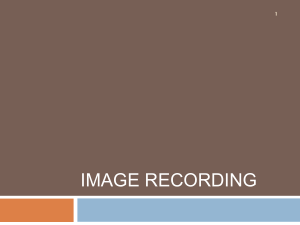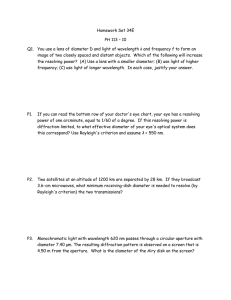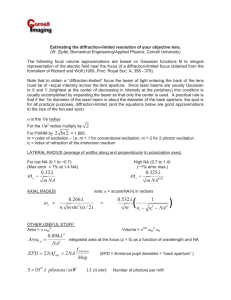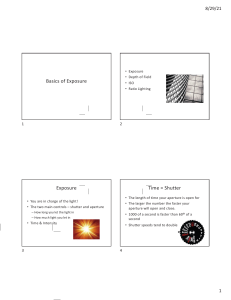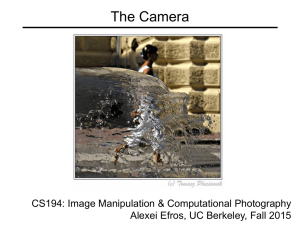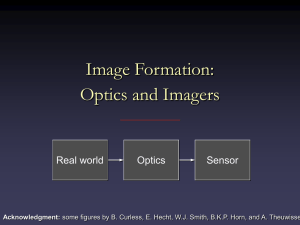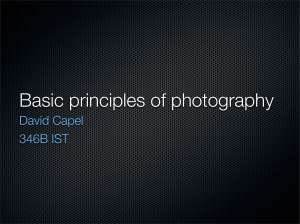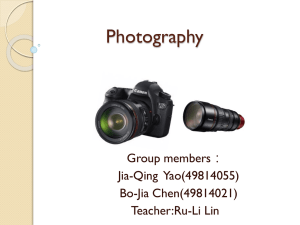Introduction to Engineering Camera Lab #3 - 1 Agenda
advertisement
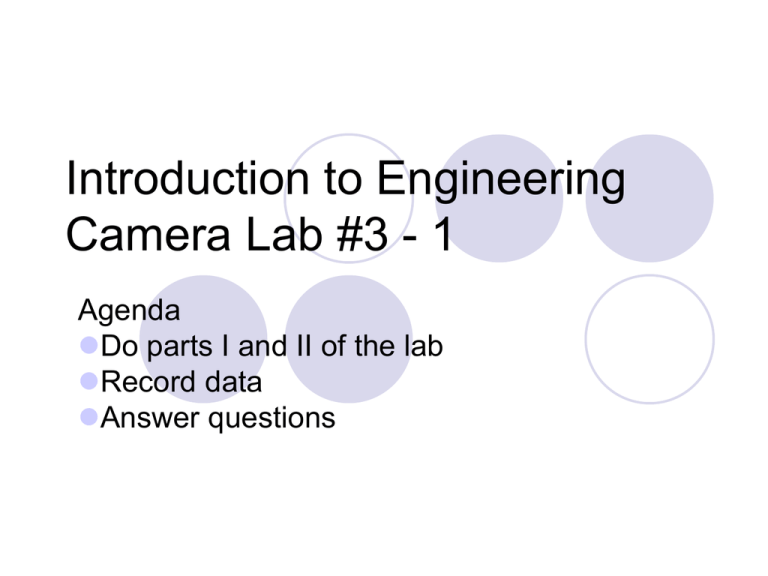
Introduction to Engineering Camera Lab #3 - 1 Agenda Do parts I and II of the lab Record data Answer questions Tasks I & II Objective: Determine some characteristic quantities associated with the camera. The focal length (TASK I). The near and far focusing distances (TASK II). Focal Length a b Image f O ab / AB = f/H f = (H * ab) / AB H B A Object Imaging Configuration (Top View) Task I Task I Pick the best central image. Measure “ab” (using the loupe). Each group member should measure the length of the subtense bars. Try not to be biased by the previous measurements in your group. Lens t H H' P y F F' N' N y' P' f' f x s x' s' L Lens Equation The lens equation relates the focal length (f), the image distance (s`) and the object distance (s). 1/f = 1/s + 1/s` Depth of Field Depth of Field The distance in the object space within which the object point can be moved and still be in acceptable focus. pA qA a AN c AF A af aN Depth of field A Image plane for object point A Circle of confusion same size at both apertures c Factors Affecting Depth of Field The focal length (f). The object distance (s). The diameter of the aperture stop (D). The smaller the aperture the larger the depth of field and focus. The radius of the acceptable circle of confusion (u). Task II Sn & Sf → S. S & f → S`. S , S`& u → f/D (D is the diameter of the aperture). Compare the estimated diameter of the aperture with diameter of physical aperture. Change Sn & Sf until you get a reasonable diameter of the aperture Photography d c a b Image Space Lens A B C D Object Space Assignment Read Parts III, IV, and V of the Camera Lab #3 procedure. Think about answers to the questions in those parts.

